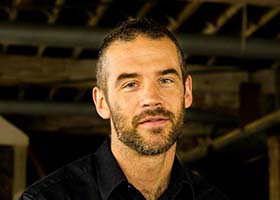
by Steve Risner The human hand is the most versatile tool known. It’s used for a variety of things. It’s a symbol of strength and honor around the world. It’s used for greetings (some kind and some not). With it we pledge to tell the truth or honor a deal. Often times, just by the look and feel of a set of hands, you can guess a man’s profession or activities of interest. If they are rough and dirty they might indicate construction or some other type of heavy labor, while calloused fingertips would indicate a musician. You can tell a lot from a person’s hands. For some, the hands are the primary form of communication with the world, whether through signing or writing/typing. Do you realize this amazing invention (from the Designer of the universe—the God of the Bible) can play a classical piece on the piano at up to 20-30 notes per second per hand and dig a hole in the ground? You can grasp an egg without breaking it or crush a tennis ball with, on the average, 100 lbs of force. The hand truly is an exceptional creation. Consisting of 29 bones (depending on what we count) connected by 123 named ligaments to give us 29 different joints, the structure of the hand is terrific. There are 34 muscles that control the hand’s movements—some of which are in the palm while others are in the forearm. None are found in the fingers, although they can make incredibly fine movements. The complex structure allows the tendons that extend to the middle phalanx (bone segment) of the finger to split allowing the tendon of the last segment to slip through it to reach its destination. And all of the tendons from the forearm run very long routes to get to their target, sneaking through the wrist bones. These muscles are controlled and coordinated by nearly 25% of the motor cortex of the brain. That means that ¼ of the brain power we use to control the movements of the body are dedicated to controlling the hands! Incredible! This cortex is connected to the muscles of the hands through 3 major nerves. There are actually 48 different named nerves in the hand—the 3 main motor nerves branch into over 20 individual branches as well as over 20 named sensory nerves. What a complex composition! The muscles, bones, and other tissues of the hands are fed through nearly 30 named arteries. The hand has several parts. The thumb alone has 9 individual muscles controlled by all three major motor nerves to give us the abilities we have to use tools, carry things, and make a variety of motions. While other organisms can oppose their thumb and first finger, we have the ability to oppose our thumbs with all of our fingers. This, as well as other things, gives us the ability to handle tools in a way no animal ever would or could. The thumb is so complex that there are no less than 6 different descriptive terms used to describe its motions. We have 5 fingers each with a nail, a wrist consisting of 8 bones, and a palm. The palmar surface is unique in that there is no hair but fingerprints are found here. There is usually no color or the ability to tan. It’s extremely sensitive but tough and durable. With our hand and finger movements, our brains are actually calculating future moves well in advance of them being necessary. Evidence shows that the central nervous system predicts the best outcome of every finger movement several movements ahead of its current state. We can see this when we realize that the average reaction time is about half a second. Doing things such as typing, for instance, allows us to do more than just 2 movements per second. In fact, we can produce several movements per second with precision. Many of these patterned movements are stored in the cerebellum of the brain. Hence, when you’re typing you may be good enough to talk to someone or look at something else while doing the typing. How cool is that! It is the amazing ability and versatility of the human hand that made Sir Isaac Newton say, “In the absence of any other proof, the thumb alone would convince me of God's existence.” I marvel at the complexity of the human body—and that’s just the human hand. There are countless amazing structures and abilities throughout all of biology! How could one give credit for such amazing craftsmanship to mutation and mindless processes? That, to me, is nearly as wondrous.

0 comments:
Post a Comment